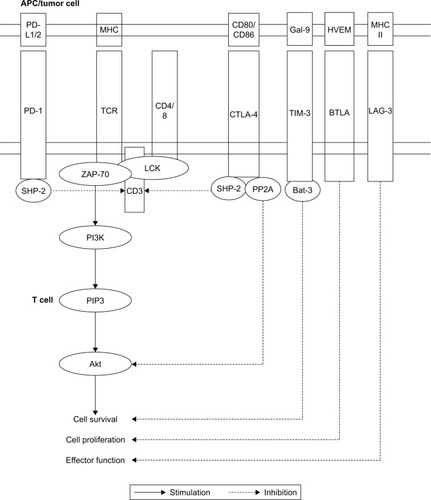Figures & data
Table 1 Immune-checkpoint molecules and their inhibitors
Figure 1 Signaling pathways of immune-checkpoint molecules.
Abbreviations: BTLA, B- and T-lymphocyte attenuator; CTLA-4, cytotoxic T-lymphocyte-associated antigen 4; HVEM, herpesvirus entry mediator; ITIM, immunoreceptor tyrosine-based inhibition motif; ITSM, immunoreceptor tyrosine-based inhibition motif; LAG-3, lymphocyte-activation gene 3; MHC, major histocompatibility complex; P13K, phosphoinositide 3-kinase; PD-1, programmed cell death protein 1; PD-L1, programmed death-ligand 1; PD-L2, programmed death-ligand 2; PIP3, phosphatidylinositol (3,4,5)-trisphosphat; PP2A, protein phosphatase 2A; TCR, T-cell receptor; TIM-3, T-cell immunoglobulin and mucin domain 3.

Table 2 Completed clinical trials of molecules used to overcome T-cell exhaustion in patients with cancer
